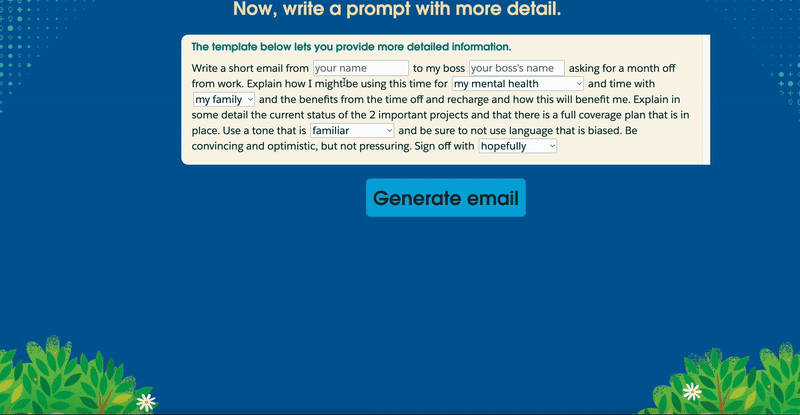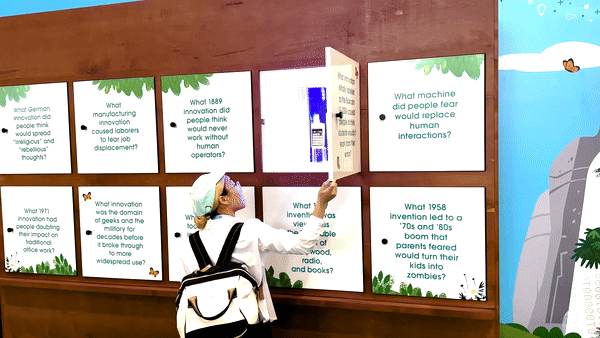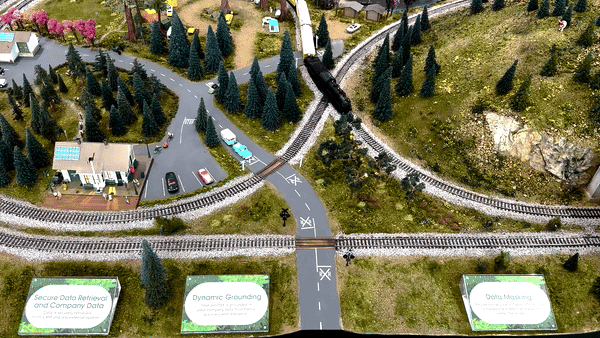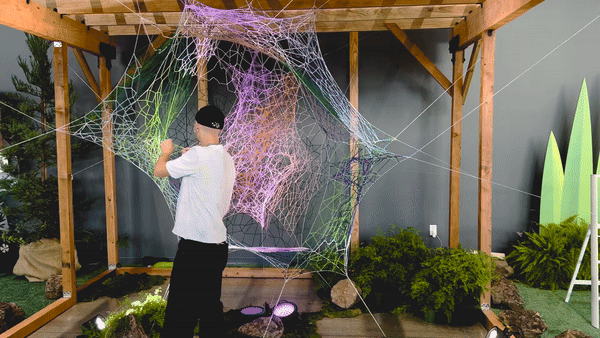AI Basics
Have you ever joined a conversation already in progress, and you think you can seamlessly jump right in, but in reality, it’s already gone far too deep and you don’t know enough details to fully participate in it?
That’s how many people felt about AI in the fall of 2023.
And with Dreamforce 23 being “the world’s biggest AI convention”, there was a good chance that we’d be having conversations about AI that our attendees wouldn’t be ready for.
So we created a place at Dreamforce where we explained the basic tenets of AI in very simple terms. We tried to stay away from tech. We tried to make every exhibit intuitive and hands-on. And considering how complicated AI is, we wanted to keep our exhibits as simple (and metaphorical) as possible.
Introducing AI Basics:
We had five different exhibits where we took attendees through some basic concepts about AI.
The first one was about prompt writing. Prompt writing is a way to communicate with an AI system by providing instructions or input in the form of text. Well-crafted prompts can guide the AI to generate more accurate and relevant responses. However, poorly constructed prompts might yield less satisfactory results. So we created a simple digital template that showed them how detailed you needed to be.

Another exhibit spoke about the different phases of AI - predictive, generative and autonomous. Each has distinct purposes and functions. We created spinners that highlighted those differences using real-world interests that they can easily relate to.

A third exhibit tried to take the fear out of being replaced by AI. We created “lockers” that, on the outside, presented a question about famous innovations throughout history that originally scared people. When you opened the “locker”, we revealed a physical copy of that innovation. And you realized how those fears were unwarranted, and how those innovations made humans more productive or connected.

Our fourth exhibit talked about Salesforce’s trust layer. We didn’t want to get into product, but this was conceptually important. Your AI is only as good as the data it learns from. Which means it's It's essential that the data is accurate, carefully collected, and free from biases. We used a train track as a metaphor for the path your data takes within AI. And we placed placards to show how a trust layer keeps their data safe from hackers and other risks. This involves practices like a closed loop system, data validation, cleaning, zero-retention, and anonymization.

And finally, we had an exhibit explaining what a Large Language Model is (LLM). An LLM is a type of artificial intelligence that has been trained on a lot of text data. It’s like a really smart conversation partner that can create human-sounding text based on a given prompt. We hired an Oakland-based artist, Swilk, who stitched together a large web that grew throughout the three-day event, serving as a metaphor for an LLM. Beside the installation was a video that connected what they were seeing live and how an LLM works.

At the end of each exhibit, we placed a QR code that provided attendees with a list of places throughout Dreamforce where they can extend their learnings on that topic. This could be an installation, a talk, a breakout or even a PDF.
AI Basics was a huge success story at Dreamforce 23. It served as a necessary launching spot for many attendees. We had docents who answered countless questions about AI. We provided attendees with a game plan for their three-day experience. And it modeled an initiative that we need for future events.